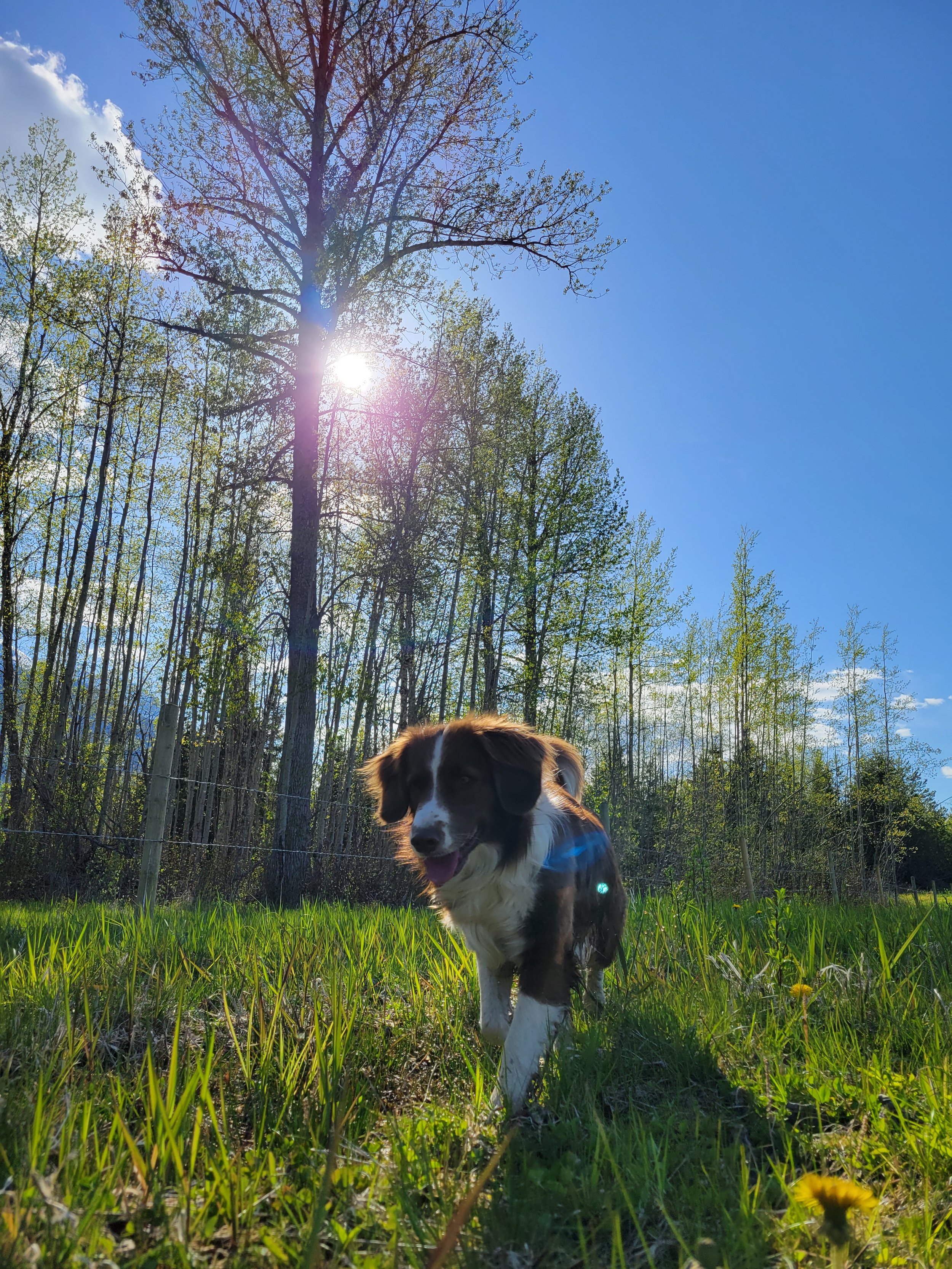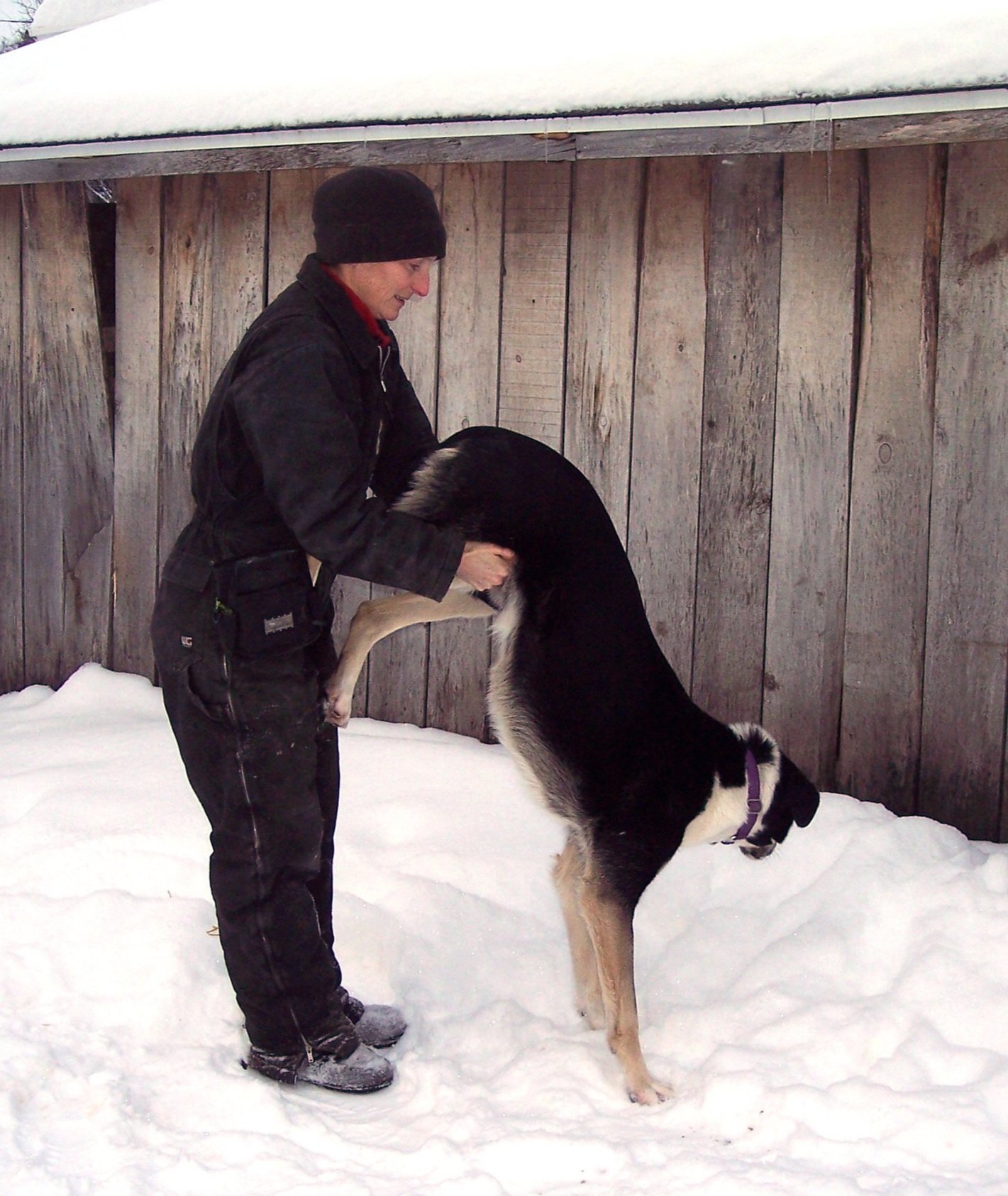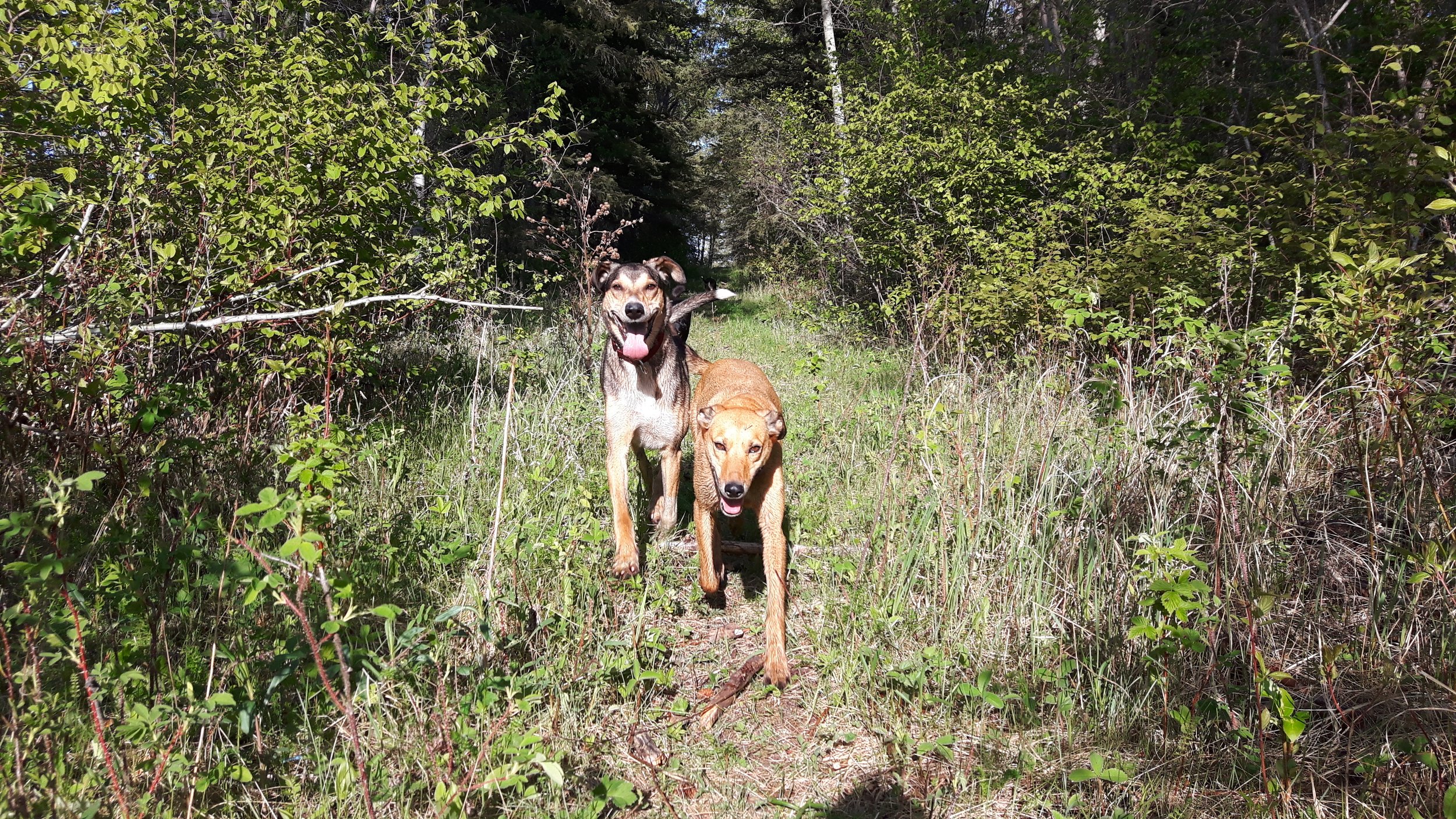Not every dog who scraps or shows aggression needs to be trained. For dogs who occasionally squabble with their housemates or other dogs without injuries beyond a few minor dings, you have the wonderful option of just not worrying about it (read more about dog squabbles here). But for those dogs who are scared of dogs, or those dogs who are reactive on leash, or those dogs who squabble frequently during playtime? In all those cases it makes sense to intervene and train. Dog trainers have a couple of tools for treating dog-dog aggression, and if you approach a professional, modern dog trainer about your dog, they’ll likely use one of the following approaches to reduce the frequency of dog-dog aggression.
Let’s Do this Instead
For dogs who display leash aggression, many dog trainers will recommend that you train your dog to do another behaviour instead of the lunging, barking, and displaying. This usually is some variant of sitting, looking at the owner, a “leave-it”, or other similar easy-to-do behaviour. This behaviour is usually trained with food treats. Your trainer will set up a sophisticated and comprehensive plan to get the dog performing the behaviour at first in non-worrisome contexts, and then over many repetitions and increasingly difficult contexts, end up in real life. A dog who used to lunge and snarl will, at the end of training, be able to simply do another behaviour instead, knowing that a delicious food reward is waiting. Many Reactive Rover type of classes are also great at helping leash reactive dogs.
Pavlovian Counter-Conditioning
For dogs who are fearful, many trainers will choose to use Pavlovian counter-conditioning. Have you heard of Pavlov’s dog? The one who learned to drool at the sound of a bell? The bell was always followed by food, which allowed the dog to learn to anticipate good stuff. This powerful learning system can be gently hijacked by dog trainers and dog owners in order to change a dog’s mind about something that used to scare her. In a Pavlovian counter-conditioning protocol, the dog learns that the sight of another dog (which used to be scary, and bring about aggressive displays) now predicts treats. If the protocol is set up well, the dog can’t help but start to like the sight of other dogs...it’s just how brains work! Generally, Pavlovian conditioning is paired up with another technique known as desensitization. So a dog won’t just see a dog two feet away, and then get a nice treat. No, no, no—that would be way too much for most scared dogs. So instead, the scary dog appears in the distance, far enough away that the scared dog can handle it. And then the treats start to flow. The good news is that Pavlovian counter-conditioning is fantastic at reducing fearfulness in dogs. The bad news is that it takes a knowledgeable and experienced coach. Training a dog to sit at the door or run through a tunnel on cue is much easier than getting Pavlovian conditioning right. It takes real skill on the part of the trainer. But hey, we expect our kids’ teachers and our dentists to have real skills, so expecting the same of your dog trainer isn’t outlandish in the least.
Speeding Tickets: Canine Edition
Occasionally, a dog who scraps at the dog park but isn’t scared needs some help learning what’s appropriate play and what’s not. These dogs do well if they get a speeding ticket when they start to speed up. For humans, a speeding ticket removes some dollars from our pocketbook, which means less fun in our future. For dogs, a speeding ticket also removes fun from their future, but not with a piece of paper... Instead of a summons to appear, these dogs are summarily leashed up and removed from play for a few minutes or even a few hours. And just like how speeding tickets work to reduce speeding, the consequence of “play ending” reduces scrapping in non-fearful dogs.
What We Don’t Do
Since dogs who are aggressive to other dogs are either frustrated, upset, afraid, or simply unschooled, there are a few techniques that are not effective or acceptable. Any technique which is designed to change a dog’s behaviour by scaring or hurting them has no place in a protocol to help aggressive dogs. It is actually a bit boggling if you think about it: the answer to “how can I get my dog to be less afraid” just can’t be “scare her or hurt her”. So any technique which purports to read dogs’ minds (reduce her status, show her who is boss, pretend to be her mother, and so on) but includes the use of yelling, shock collars, prong collars, choke collars, swatting, leash jerks, collar pops, or firm words… imagine it. Imagine if you went to a counsellor to help with your fear of flying, your fear of snakes, or to get past your trauma from a horrible incident you lived though. Imagine your counsellor saying “from now on, every time you feel scared, I’m going shock you with this special device, or yell in your face.” It’s a recipe for disaster, and the welfare implications for dogs are very sad indeed. Sure, dogs who are shocked, jerked around, or yelled at may change their behaviour, and they may do so quickly. They’ll stop showing us that they’re scared. But changing their behaviour isn’t enough: these dogs will remain scared. Instead of growling or barking, they’ll be quietly terrified, and stay quiet right up until the moment they bite, fight, or escape. In other words, hurting or scaring fearful dogs turns a scared loud dog into a scared, and potentially dangerous, quiet dog.
For non-fearful dogs who are aggressive (leash displays or dogs with play problems), there are wonderful and well-established ways to help these dogs using standard training plans. Since a non-scary and non-painful approach exists, it is inappropriate to turn to anything scary or painful.
And finally, it is inappropriate to remove play from the lives of playful dogs if they happen to play a bit wrong. For a social animal like a dog, taking them away from play for such a minor infraction is a travesty. We don’t say “no more play for you” to kids who make silly, kid-like mistakes at the playground, do we? No, we help them to become better at being a kid. Play is physically exhausting, mentally enriching, and immensely enjoyable. We have the ability to allow normal play to proliferate in these dogs’ repertoires by the application of non-violent consequences like the doggy version of a speeding ticket. To not do so (and instead sequester dogs away from their canine friends) when there are resources available to help is doing a disservice to our dogs.
The Final Picture
Timber was firmly in the “scared” and “guarding” categories, so we both conditioned him to enjoy other dogs in proximity (thanks, Pavlov’s dog!) and trained him to do something else instead (a nice sit-stay at the door or gate, instead of scrappy scrapping). We changed up our routines around guests and how we let dogs in and out the door, which prevented most fights while we were actively training. We’re four or five years out now, and we rarely have scraps. I still ask Timber to sit and give him a cookie at the doorway during any particularly active scrums, and will likely continue to do this for his whole life. It’s a small price to pay for a happy Timber and a more peaceable home.
Dog-dog aggression is a tricky problem for owners to work on without professional assistance, but luckily modern dog professionals are qualified and ready to help with dog-aggressive dogs. If your dog is snarling and snapping on leash, try a reactive rover dog class taught by a force-free, positive reinforcement trainer. If your dog is scared or tips over into squabbles at the dog park, call the trainer for some one-on-one help. If you have a lot of dog training under your belt and feel ready to tackle your scrapping dog on your own, pick up a copy of the book FIGHT! by Jean Donaldson.
But most of all, don’t give up. Don’t fret. Non-injurious aggression is really just normal dog stuff. Hitch up your pants, push up your sleeves, and if it’s warranted, get ready to train.
This article was originally published on Dog, International.



















